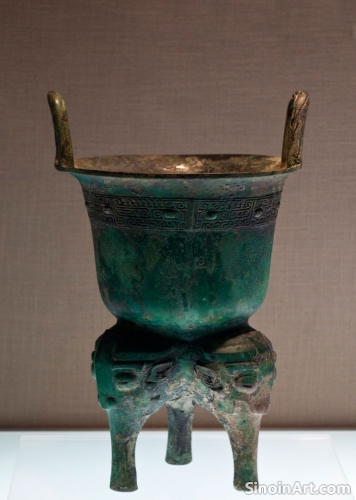Bronze Ware and Ancient Chinese Astronomy: Calendars, Timekeeping, and Ritual Observances
|
While bronze was used to create astronomical instruments, it also played a key role in the creation and organization of ancient Chinese calendars, used to mark the passage of time, and to coordinate ritual practices, as well as agricultural practices, demonstrating the important interplay between scientific knowledge and also the cultural practices of the time. The calendar served as both a practical system for organizing the year and also as a representation of the perceived structure of the universe. The use of bronze helped to elevate the calendar to a prominent place in Chinese life.  Bronze was used to create components for timekeeping devices, such as sundials and water clocks, allowing for a more precise and reliable method of tracking the passage of time. The accuracy of these timekeeping devices helped to make life more predictable and reliable. The precise nature of these devices was key to their successful operation.  Bronze was also used to create ritual vessels and musical instruments, which were incorporated into calendrical observances, and to mark important dates and events in the agricultural year and also in other ritual cycles. The integration of these different art forms with the calendar helped to codify the importance of each. The use of the bronze instruments also helped to connect the earthly realm with the larger cosmic order.  The creation of calendars based on the precise movement of the sun, moon, and stars, underscores the deep understanding of astronomy and mathematics that existed in ancient China. The combined application of these different disciplines helped to create both a better understanding of the world, and also to provide order and structure for daily life. The careful study of the relationship between bronze ware and the ancient calendar helps us to better understand the relationship between science, technology, and religious practice in ancient China. The intersection of these different areas of study is a key element in illuminating both the culture and also the scientific achievements of the time. |
Tag : bronze calendars, ancient Chinese astronomy, timekeeping, ritual observances, calendar systems
Related information
- Bronze Ware and the Development of Ancient Chinese Architecture: Design Principles and Construction Tools
- Bronze Ware and the Representation of Power in Ancient Chinese Royal Tombs: Scale, Detail, and Symbolism
- Bronze Ware and the Development of Ancient Chinese Metallurgy: Innovations and Techniques
- Bronze Ware and Ancient Chinese Concepts of Harmony: Balance, Symmetry, and the Cosmos
- Bronze Ware and Ancient Chinese Mythology: Exploring the Interplay Between Myth, Art, and Ritual
This article explores the use of bronze in ancient Chinese architecture, highlighting its role in creating surveying tools, structural components, decorative elements, and demonstrating its importance in both design and construction.
This article explores the use of bronze ware in ancient Chinese royal tombs, highlighting its role in conveying power and wealth, its use of scale and detail, its symbolic designs, and how these objects were intended to ensure the continued recognition of the deceased in the afterlife.
This article explores the development of ancient Chinese metallurgy in relation to bronze ware production, highlighting the discovery and use of different metals, the creation of alloys, the development of casting techniques, and the technical achievements of ancient metalworkers.
This article explores the influence of ancient Chinese concepts of harmony on bronze ware, highlighting the importance of balance, symmetry, precise proportions, and the connection of these principles to a wider understanding of the cosmos.
This article explores the use of mythological imagery on Chinese bronze ware, highlighting the depiction of dragons, phoenixes, and other creatures, and how these motifs reflected ancient beliefs and helped to connect the earthly world with the spiritual realms.